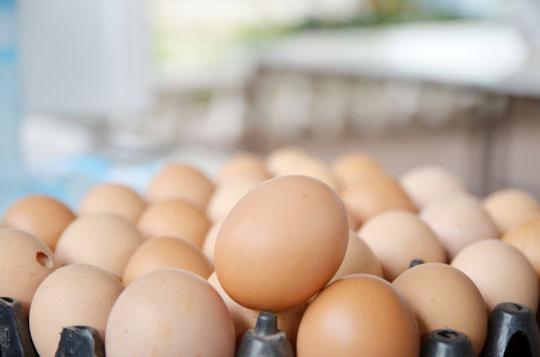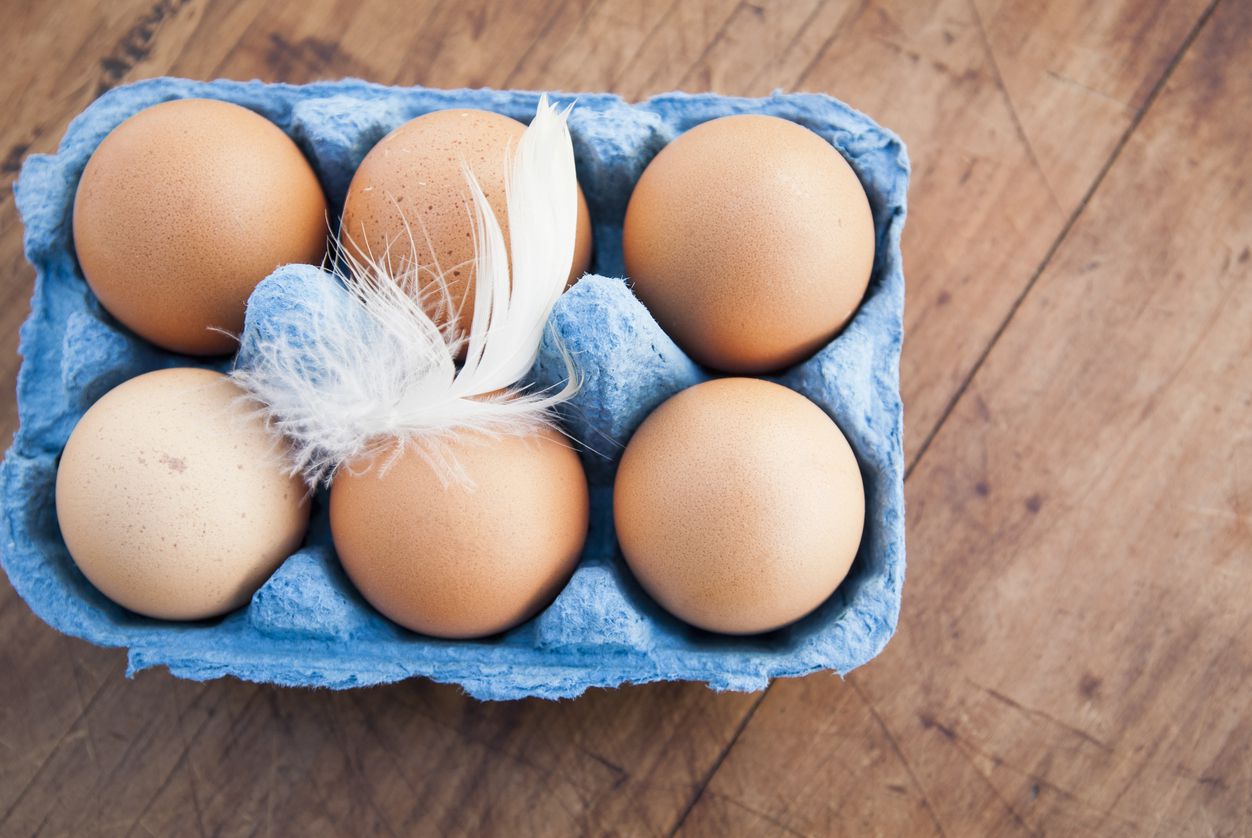How to check a rotten egg or not. How to determine the freshness of an egg: several well-known methods
Chicken eggs are used for cooking almost daily. Whatever the hostess has in mind - from pastries to meatballs - everything requires the addition of an egg. This product contains many vitamins and beneficial trace elements, besides, chicken protein well absorbed human body. But if passed, the rotten taste can ruin the whole dish. to avoid this situation?
Method one - water test
The easiest way is to determine the freshness of eggs with cool water. All you have to do is drop the product into cold water and see what happens. Fresh like chicken, they immediately sink to the bottom, slightly turning on their side. The old ones try to float or float, and the higher the egg is, the older it is. This method is based on the fact that over time the contents of the shell dries up, more air accumulates under it, which helps to rise to the surface of the water. Therefore, it is better not to use all eggs that confidently float in water.
Method two - shaking
How to determine the freshness of an egg if there is no container of water at hand, but you need to figure it out quickly? It is enough to shake it, placing it between the thumb and forefinger. If the product is fresh, nothing will move under the shell, even if you shake very, very hard.  If the fingers feel the movement of the yolk in different sides, the egg can be safely thrown away.
If the fingers feel the movement of the yolk in different sides, the egg can be safely thrown away.
Method three - shell inspection
For those who cannot complain about observation, there is another way to determine the freshness of an egg. Carefully examine the shell - in fresh eggs it is hard, smooth, looks matte and dry. If it shines, seems greasy and casts gray - the expiration date has already expired. Moreover, you should not eat those products whose shells are soft to the touch. Their contents are definitely rotten.
Method Four - Content Evaluation
If all the previous methods did not reveal anything suspicious, but doubts still remain, break the egg into a separate flat plate. Inspect it: in fresh, the yolk should be dense and round, rather high.  The protein should surround the yolk in a thick layer, without spreading over the surface of the dish. In stale eggs, the yolk looks more compressed and not as elastic, and the protein spreads all over the plate.
The protein should surround the yolk in a thick layer, without spreading over the surface of the dish. In stale eggs, the yolk looks more compressed and not as elastic, and the protein spreads all over the plate.
Why is a spoiled egg dangerous?
It is best to remember how to determine the freshness of an egg, and use at least one of the tests described above. Otherwise, the possibility of getting a rotten product into the dish is not excluded. The taste of all other components will be clearly spoiled. If the eggs were bought a long time ago, you should first use those methods that evaluate appearance and do not require violation of the integrity of the shell. If the contents are rotten, they will smell intense and unpleasant. It is advisable to avoid this and not violate the integrity of the eggs that aroused suspicion, immediately carefully throwing them away. So your dishes will always be appetizing, and the kitchen will retain its cozy aromas.
Do you have eggs in the fridge and you cannot determine how edible they are now? Knowing how to check if an egg is rotten or not will help you find spoiled eggs without breaking the shells. There are several ways to do this.
Appearance check
Fresh and rotten eggs differ in appearance. In fresh specimens, the shell is smooth and slightly shiny in the light. For those that have had time to lie down, the shell becomes dull and slightly rough to the touch. And if it is covered with spots and has become a little soft, then the egg cannot be used - it is definitely rotten.
Checking with an ovoscope or a conventional lamp
Pick up an egg and look through it at any source of bright light. Fresh protein is perfectly translucent, and the yolk is located in the center. After a week or two, the protein will still show through, but there will be small dark areas in it. Rotten eggs will not show through.
Hearing test
If you have keen hearing, put an egg to your ear and shake it. Inside a fresh specimen, there is no particular shaking, but a thoroughly lain down one will gurgle a little, and its contents will actively move when shaken. The more the contents hit the shell, the more likely it is to go rotten.

Smell test
Rinse the egg with water and smell it. Hydrogen sulfide released by the spoiled contents gradually corrodes the egg membrane and penetrates through the shell. With a well-developed sense of smell, this smell can be caught.
Water test
Take cold water in a saucepan. Dip the eggs one by one into the water and see what happens to them. The freshest, 2- or 3-day-old specimens will simply sink to the bottom. Those that are already about a week old will also first fall to the bottom, then begin to move up and go down again. After 2-3 weeks of storage, the eggs will sink to the bottom only with a sharp tip and balance on it. This means that they are no longer too fresh, but still edible. But those specimens that remain floating on the surface can be safely thrown away - even if they are not rotten, they are still no longer suitable for food.

Visual assessment of freshness
If you are not sure about the freshness of the eggs, but for some reason do not want to check them using one of the above methods, then before starting cooking, simply break them over a separate bowl and look at the protein. You will notice a rotten copy immediately. Its characteristic odor and dark spots on the surface will not leave the slightest doubt. But the degree of freshness of an egg that has not yet deteriorated will be a little more difficult to determine. To do this, look at its protein. Fresh protein will be lush and dense enough, it has two layers: jelly and liquid. The density of stale protein will be much lower, it will spread over the plate with a liquidy mass.
To determine the freshness of eggs, there are many folk ways.
1. Examine the egg shell: a fresh egg has a hard shell. If the shell is soft, the egg is definitely rotten.
2. A fresh egg shines through in the sun, that is, you can see the yolk inside it.
This phenomenon is based on the work special device for transillumination of eggs - an ovoscope. It consists of a chamber and a lamp built into it. The chamber has oval holes in the shape of eggs. In a fresh egg, when viewed with an ovoscope, the contents are not dark, almost transparent, and the yolk is less noticeable than in the old one. Even through the ovoscope, the air chamber at the blunt end of the egg is clearly visible: when long-term storage it increases in size.
3. Shake the egg well in your hand. If you feel that the yolk is shifting from side to side, then it is better to throw out such an egg.
4. Dip the egg into the water. A fresh egg will stay at the bottom, an old one will float.
5. Boiled fresh eggs cleaned worse than the old ones. And from stale shells lag behind easily.
6. Put the egg on flat surface on the table and spin it hard. A fresh egg will not spin at all. And here shady egg spins freely.
7. A fresh egg is heavier than a stale one. But not everyone is able to determine the freshness of eggs by weight ...
And did you know that...
- The shelf life of table eggs is 25 days.
- According to freshness, eggs are divided into dietary and table eggs. If the egg was laid by a chicken no later than seven days ago - the egg is dietary, a week after its appearance, the egg goes into the category of canteens.
How to check eggs for freshness
Water test
One of the most popular tests for egg freshness is the water test. Pour fresh cold tap water into a saucepan no lower than the length of an egg, or just fill the sink with water. Lower the eggs one at a time and watch what happens to them:
If the eggs settle to the bottom, then they are fresh, they are no more than 2-3 days old; - if the eggs lie on the bottom, but at the same time move up and settle down again, then they are about a week old; - eggs sink to the bottom with a sharp tip and balance on it, which means they are stored for about 2-3 weeks; - if the eggs float on the surface of the water, they are very old and, most likely, have had time to die.
This test is one of the oldest, it was first described in cookbooks beginning of the 18th century.
Very fresh eggs are not suitable for all dishes, for example, for hard-boiled eggs, it is better to take products that are more than a week old
Listen to the eggs
Another way to identify a rotten egg requires good, subtle hearing. Bring the egg to your ear and shake gently, listen. If something splashes and gurgles inside the egg, then it is rotten. The sound of a rotten egg will be barely audible. Fresh eggs do not sound when shaken.
Smell the eggs
Wash the egg shells with water or detergent fragrance-free and smell the shells. Hydrogen sulfide destroys the egg membrane and penetrates through the porous surface of the shell, so you can smell it from rotten eggs.
Follow the date
Eggs go out with time or when bacteria enter through the protective membrane through punctures or cracks, therefore, when choosing eggs, pay attention to the date and check the integrity of their shell. If you bought fresh whole eggs, then you don’t have to worry about them for 1-2 weeks. If you have a lot chicken eggs and you won't have time to consume them all in a few weeks, freeze them.
How to get rid of the smell of rotten eggs
If you nevertheless broke a rotten egg in a hurry or the test for rottenness did not give results, then you face a problem - how get rid of the smell. Naturally spoiled rotten egg products will be thrown away. In the kitchen, open windows to create air circulation.
In a saucepan on the stove, boil water with vinegar, put 1 teaspoon per 100 ml of water table vinegar, you can also add any essential oils with a pleasant smell to you, especially essential oil lemon or orange. Put spices in water - cinnamon, nutmeg, cloves. The smell of vinegar will soon fade along with the smell of hydrogen, and the smell of spices will bring coziness back to your kitchen.













